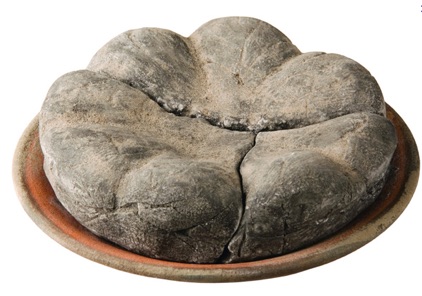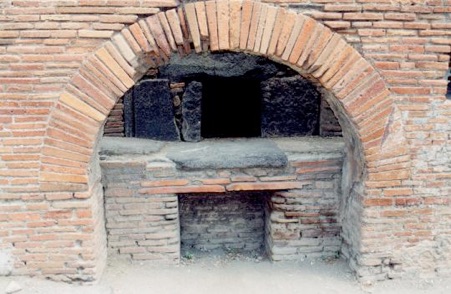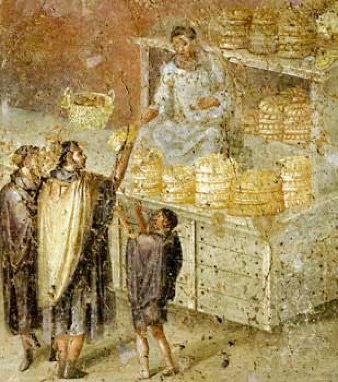Archaeological tours, packages and exclusive multy day excursions in Campania for tourists, lovers,
scholars and students.





Archaeological tours, packages and exclusive multy day excursions in Campania for tourists, lovers,
scholars and students.
The presence of many bakeries and pastry shops (about 34) for the production and sale of products made of flour, suggests that the bakery was one of the most thriving city of Pompeii. The larger plants (about 23) were almost always fitted with grinders, stall, and a residential neighborhood, but without the shop for direct sale.
The work began in the bakery with the weighing of grain, wheat was then placed in the mills by the journeymen bakers (pistores). The millstones were made of lava stone (catillus), material that did not leave harmful residues in flour to the teeth. They had an hourglass shape and long arms of wood, and inside them was inserted a conical element of smaller size (meta). These machines were operated by slaves or donkeys, which imprinted them a rotary motion can grind the grain. The flour obtained was then collected on a lead sheet that covered the circular base of brick mills. Followed the sieving adjusted depending on the type of customer to be served. The meshed sieves were used to obtain very fine white flour for breads precious, those for the coarse and coarse brown flour suitable for making bread for the populace. So, everything was mixed with water and distributed on special boards where you gave the required shape and bake.
Some types of bread were decorated with anise, poppy seeds, sesame and other trees established on the crust with egg white. It seems that only in the late-Republican began to use the yeast, obtained by mixing millet or bran flour to sour.
The ovens were made of bricks (opus latericiumcium), while the floor of the bakery was made of slabs of basalt lava, the same material used to pave roads, which facilitate the evolution of animals or slaves who pushed the millstones tied to wooden beams.
On the outer wall of the furnace of panifico connected to the house of N. Popidius Priscus, was found a slab of travertine with a phallus in relief with the inscription "hic habitat felicitas", now in the Secret Cabinet of the National Museum of Naples. The writing, the clear apotropaic value, linking the production of bread and the generative force of nature.
Of special interest are found in the charred eighty loaves Modestus shop. They have nearly all of a circular shape to eight segments, a diameter of about 20cm, and an average weight of about 580g.



type of bread found in Boscoreale
wood oven in Pompeii
fresco with baker
BAKERIES IN POMPEII
Pompeii Tour guide - Herculaneum Tour guide - Stabiae Tour guide - Oplontis Tour guide - Naples Tour guide
Amalfi Coast - Sorrento - Positano - Paestum Tour guide - Capua Amphitheater - Procida - Ischia - Capri
Copyright © Pompeiin.com - E-mail: info@pompeiin.com

